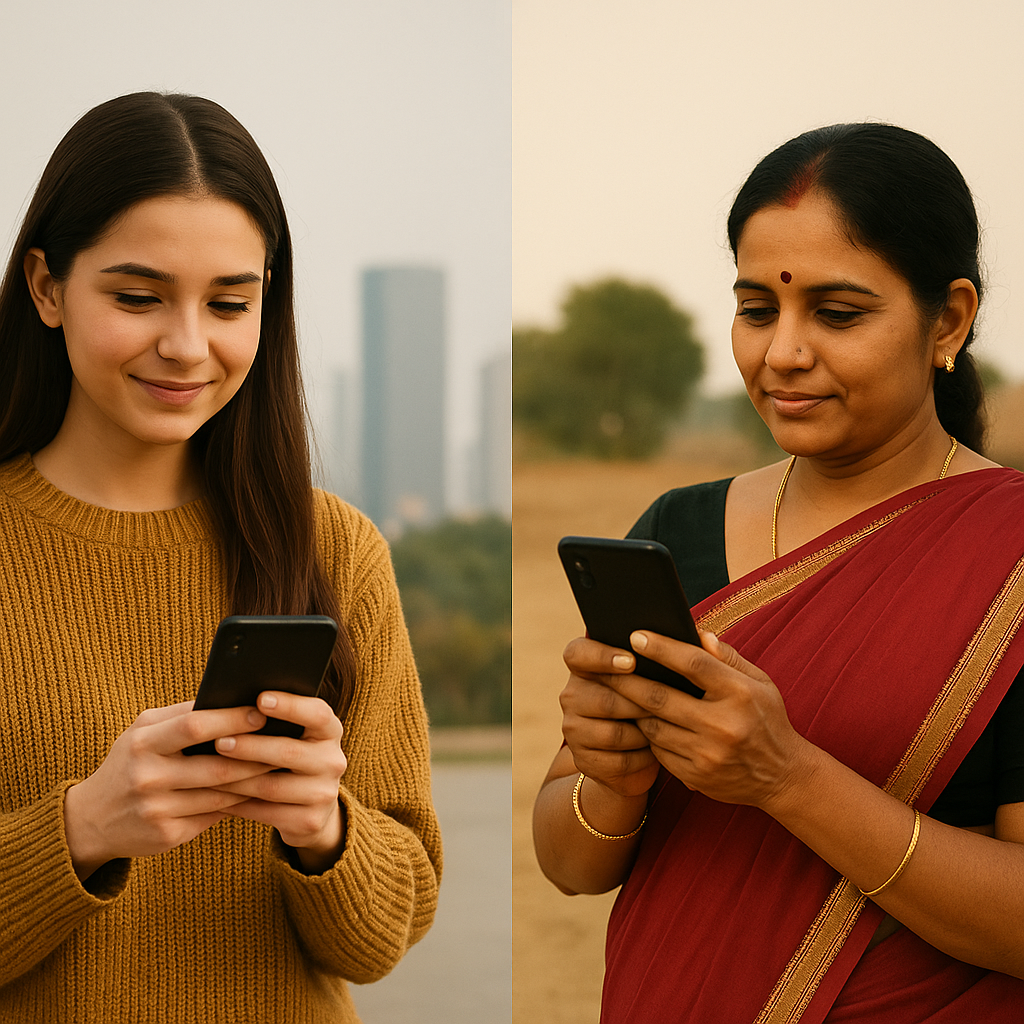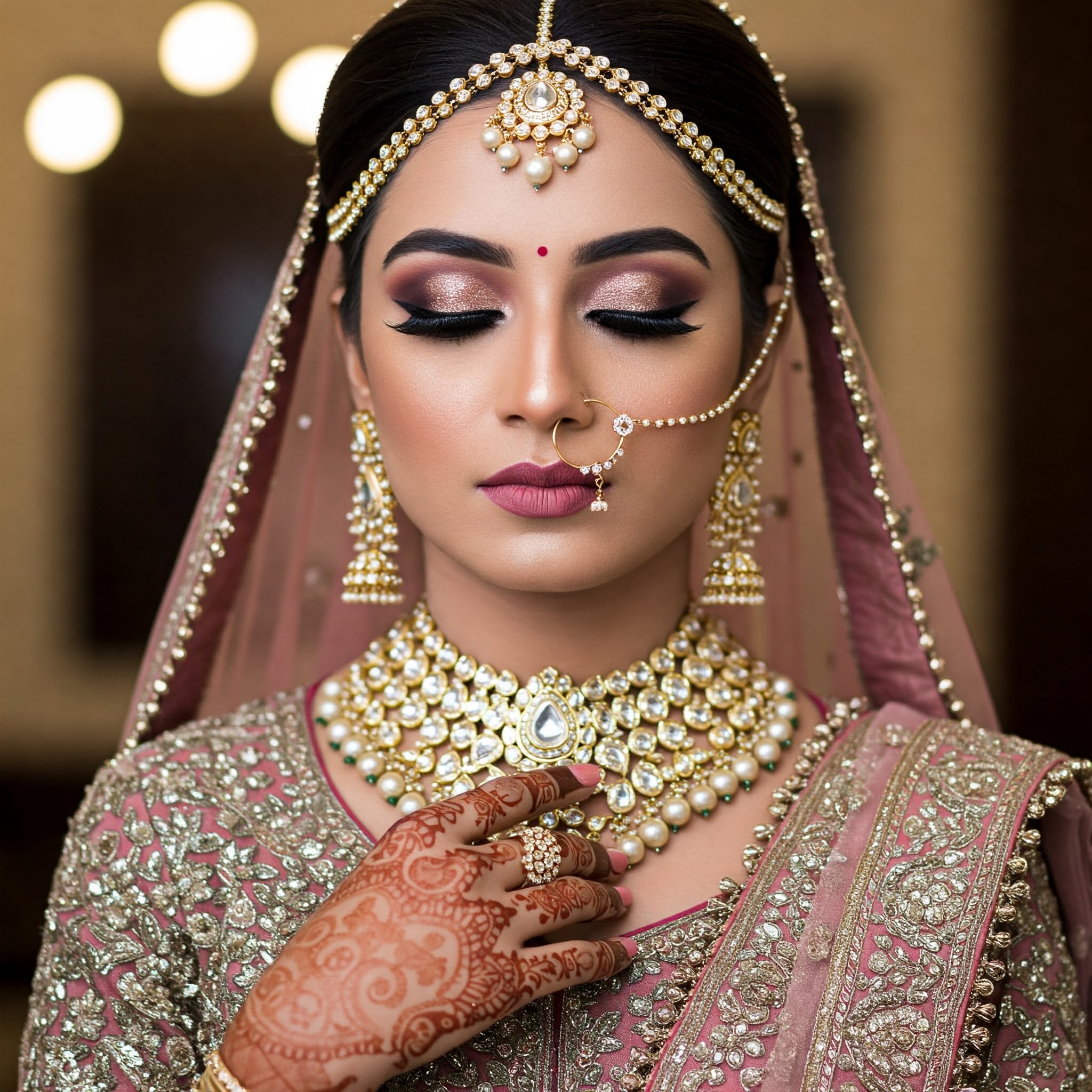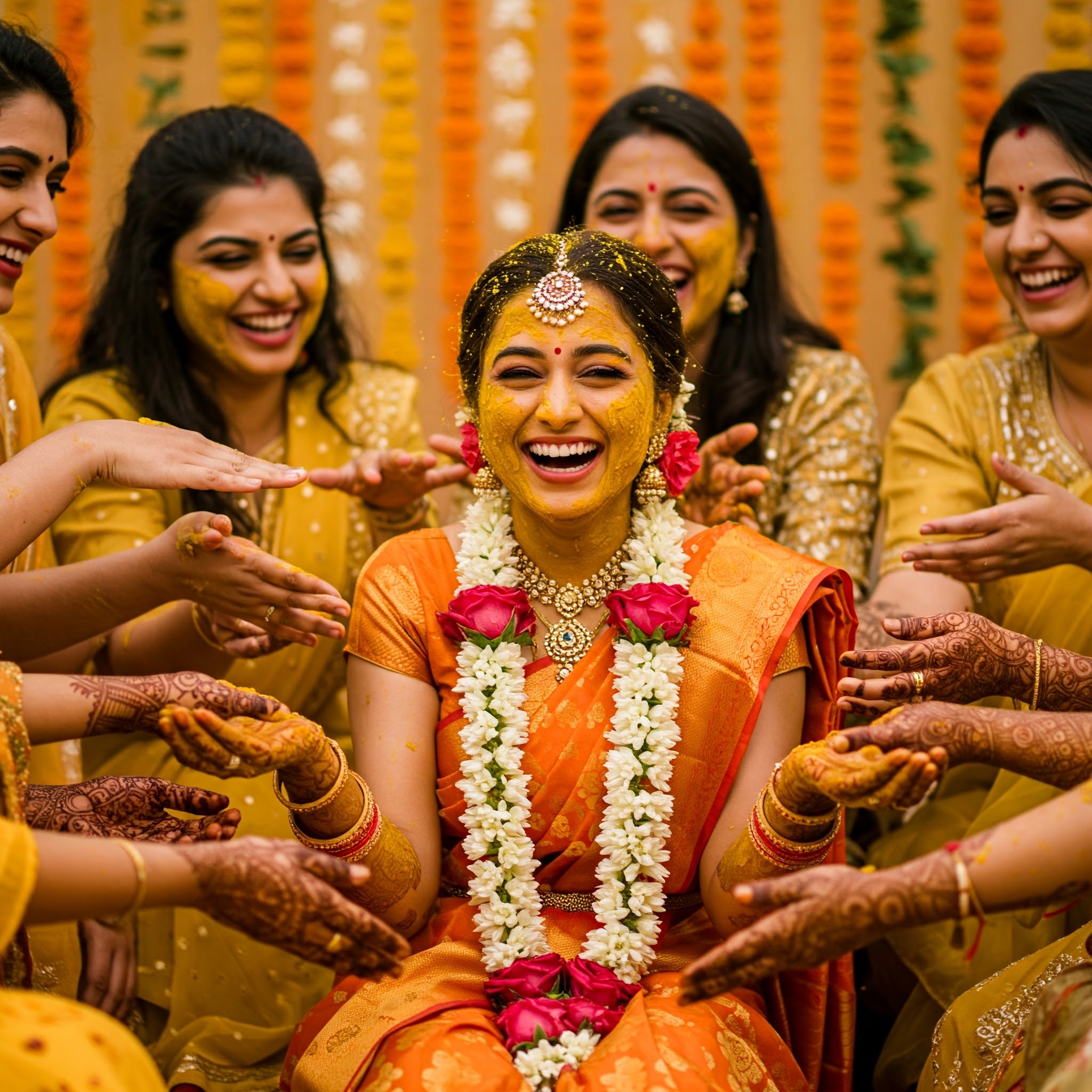
Urban vs Rural Usage of Matrimony Portals in India
24-Jun-2025 digi shaadi
Introduction: Two Indias, One Digital Wedding Aisle
India is often described as two countries in one—urban and rural—and nowhere is this contrast more visible than in the way people approach marriage. With the rise of online matrimony portals, digital matchmaking is now a shared space, yet urban and rural users interact with it in distinct ways.
This blog explores how urban and rural India use online matrimony portals differently. From access to expectations and literacy to language, we'll uncover the nuances that shape how love—or arranged compatibility—is found in digital India.
Mobile Penetration: The Real Driver of Access
Mobile access is the backbone of digital matchmaking in India.
In cities, users often have access to multiple devices—smartphones, laptops, and tablets—and stable internet. They frequently switch between apps, browse profiles while commuting, and attend virtual meetings without a hitch.
In contrast, rural users rely heavily on affordable smartphones and prepaid data plans. They often share a device with family members. Despite limited bandwidth and infrastructure challenges, mobile penetration in rural India has surged. This mobile-first usage pattern is fuelling the growth of matrimony apps that are lightweight, local-language friendly, and data-efficient.
Digital Literacy: One’s Strength, Another’s Barrier
Urban users, especially working professionals, are comfortable navigating app interfaces, using filters, setting privacy controls, and customising preferences. They understand concepts like algorithmic suggestions, profile optimisation, and photo curation. Their journey is self-driven, efficient, and often fast-paced.
On the other hand, many rural users are still new to such interfaces. They may struggle with English instructions, fear privacy issues, or depend on a local cybercafé or digital centre to register. Some rely on their children or siblings to operate their profiles. There is a hesitance to upload personal photos or engage in open chat features.
This digital literacy gap also shapes trust. Urban users often explore multiple matches over time. Rural users may prefer sticking to limited, family-approved options due to fear of misuse or community judgement.
Profile Creation: Self-Led vs. Family-Led
Urban users usually create their own matrimony profiles. They upload polished pictures, write expressive bios, and highlight hobbies, career goals, and preferences. Many mention lifestyle details like food habits, fitness routines, or travel interests.
Rural users often have their profiles created by parents or elders. The biodata is factual—age, education, job title, and family background. Descriptions are minimal. Photos are either formal or sometimes absent altogether, especially for women. The emphasis is on social reputation, religion, and caste.
Urban profiles are expressions of individual identity. Rural profiles reflect family pride and traditional markers of status.
Language Preferences: English vs. Vernacular Interface
Urban users, especially in metros, interact easily with English interfaces. They type fluently, use advanced filters, and communicate confidently.
Rural users prefer vernacular languages like Hindi, Tamil, Telugu, Marathi, or Bengali. Platforms that offer complete native language support—including voice search, audio profiles, and regional script options—see higher rural engagement.
A profile written in fluent English might be viewed as "elite" in rural contexts, while a Tamil or Hindi profile connects better with rural families who value authenticity over polish.
Expectations from a Match: Compatibility vs. Community
Urban users are increasingly choosing partners based on compatibility, values, and shared life goals. Education, career ambition, lifestyle, and mutual respect are top factors. Inter-caste and inter-regional matches are gaining acceptance in cities.
Rural users continue to prioritise caste alignment, horoscope matching, parental approval, and family reputation. A good match isn’t just about the bride and groom—it’s about uniting two families that uphold similar values and traditions.
In urban spaces, individuals date or speak before deciding. In rural areas, family introductions often precede personal interaction.
Interaction Style: Direct vs. Delegated
In urban areas, interaction is direct. Users chat, voice call, or video meet potential matches. They ask tough questions—career plans, location flexibility, views on kids—early in the conversation. Independence and openness are the norms.
In rural India, interactions are often mediated. Families speak first, photos are exchanged privately, and only after initial approval do the prospective bride and groom speak—sometimes only once before engagement. Modesty and reputation are paramount, especially for women.
Privacy and Safety Concerns
Urban users expect and demand strong privacy controls—who can view their profile, who can message, and who sees their pictures. They are alert about scam profiles and prefer verified badges or background checks.
In rural communities, fear of being judged or misrepresented is higher. Some users hesitate to register altogether. Women are especially concerned about photo misuse. A bad experience can lead to community backlash.
To gain rural trust, platforms must offer:
-
Photo locks
-
Profile verification
-
Gender-safe communication tools
-
Educational prompts for safe usage
Popular Features: Differing Priorities
Urban users love:
AI match recommendations
Video bios
Virtual meeting invites
In-app messaging and filters like “willing to relocate”, “fitness-focused”, or “pet lover”
Rural users prefer:
SMS or WhatsApp alerts
Language toggle buttons
Voice note introductions
Local match suggestions from their caste or community
What feels intuitive in Delhi may feel alien in rural Bihar. Matrimony portals need to design experiences around both users.
Parental Involvement: Suggestion vs. Control
Urban parents often help shortlist matches or offer advice, but the final decision usually rests with the bride or groom. Platforms even offer “parental access mode” so they can track leads without interfering.
In rural India, the reverse is true. Parents take charge. The prospective groom or bride may see options only after family vetting. Horoscope match, property background, and family status dominate discussions.
To win rural users, portals must consider building dedicated “Parent Profiles” or “Family View Dashboards” with simplified, decision-friendly formats.
Community Matchmaking: Digital Meets Tradition
In rural India, local priests, relatives, or temple elders still influence matchmaking. While online platforms are growing, many users use them alongside these traditional gatekeepers.
Urban India is moving away from such models, relying more on digital research, self-driven search, and virtual dates.
Platforms that respect both approaches, perhaps through community-focused filters or local events, will create greater relevance.
Challenges for Matrimony Portals
For Urban Markets:
-
Information overload from too many matches
-
Increasing demand for “serious only” filters to weed out casual browsers
-
Choice fatigue and indecision
For Rural Markets:
-
App fatigue due to lack of local content
-
Reluctance to share personal details
-
Lack of support for slow internet or low-literacy users
Matrimony platforms must walk the fine line between high-tech features for urban millennials and accessible, trusted solutions for rural families.
Opportunities Ahead: A Converging Digital Future
India’s digital divide is closing. Rural India is fast catching up, and urban India is demanding deeper cultural resonance. The future of matrimony platforms lies in:
Offering complete regional language experiences
-
Introducing guided onboarding for first-time rural users
-
Blending family involvement tools with user privacy controls
-
Personalizing search filters for both modern and traditional mindsets
-
Ensuring trust, safety, and transparency for women across all geographies
Curious about how these platforms are evolving? Read Top Trends in Indian Matrimony Portals in 2025
Conclusion: One Nation, Many Love Stories
India’s online matchmaking scene is a mirror to its broader society: diverse, layered, and in transition. Urban and rural users may differ in access, behaviour, and expectations—but they share the same dream: a meaningful, lasting relationship.
By understanding these nuances, online matrimony platforms can create more inclusive, effective, and culturally rooted experiences—helping millions find not just a match, but the right match.
Still unsure which platform fits your needs? Start with our guide on How to Choose the Right Matrimony Portal in India




